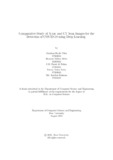| dc.contributor.advisor | Parvez, Mohammad Zavid | |
| dc.contributor.author | Niloy, Ahashan Habib | |
| dc.contributor.author | Shiba, Shammi Akhter | |
| dc.contributor.author | Fahim, S.M. Farah Al | |
| dc.contributor.author | Faria, Faizun Nahar | |
| dc.contributor.author | Rahman, Md. Jamilur | |
| dc.date.accessioned | 2021-10-06T04:39:54Z | |
| dc.date.available | 2021-10-06T04:39:54Z | |
| dc.date.copyright | 2021 | |
| dc.date.issued | 2015-08 | |
| dc.identifier.other | ID: 17301004 | |
| dc.identifier.other | ID:18201124 | |
| dc.identifier.other | ID:17201151 | |
| dc.identifier.other | ID: 17201003 | |
| dc.identifier.other | ID: 17101291 | |
| dc.identifier.uri | http://hdl.handle.net/10361/15147 | |
| dc.description | This thesis is submitted in partial fulfillment of the requirements for the degree of Bachelor of Science in Computer Science and Engineering, 2021. | en_US |
| dc.description | Cataloged from PDF version of thesis. | |
| dc.description | Includes bibliographical references (page 42-54). | |
| dc.description | 45 pages | |
| dc.description.abstract | Coronavirus 2019 (in short, COVID-19), originated in the Wuhan province of China
in December 2019, has been declared a global pandemic by WHO in March 2020.
Since its inception, it’s rapid spread among nations had initially collapsed the world
economy and the increasing death-pool created a strong fear among people as the
virus spread through human contact. Initially doctors struggled to diagnose the
increasing number of patients as there was less availability of testing kits and failed
to treat people efficiently which ultimately led to the collapse of the health sector of
several countries. To help doctors primarily diagnose the virus, researchers around
the world have come up with some radiology imaging techniques using the Convo lutional Neural Network (CNN). While some of them worked on x-ray images and
some others on CT scan images, none worked on both the image types. Thus there’s
no way to know which image works better for a particular model. This, therefore,
insisted us to perform a comparison between x-ray and CT scan images. Thus we
came up with a novel CNN model named CoroPy which works for both the image
types and shows that in 2 classes (normal and covid), CT scan images show a better
accuracy and it is 99.17% whereas it is 95.73% for x-ray images. However, in the
case of 3 classes (normal, covid and viral pneumonia), x-ray images show a better
accuracy and it is 92.45% whereas it is 68.81% for CT scan images. | en_US |
| dc.description.statementofresponsibility | Ahashan Habib Niloy | |
| dc.description.statementofresponsibility | Shammi Akhter Shiba | |
| dc.description.statementofresponsibility | S.M. Farah Al Fahim | |
| dc.description.statementofresponsibility | Faizun Nahar Faria | |
| dc.description.statementofresponsibility | Md. Jamilur Rahman | |
| dc.language.iso | en | en_US |
| dc.publisher | Brac University | en_US |
| dc.rights | Brac University theses are protected by copyright. They may be viewed from this source for any purpose, but reproduction or distribution in any format is prohibited without written permission. | |
| dc.subject | Confusion matrix | en_US |
| dc.subject | Pneumonia | en_US |
| dc.subject | CT scan | en_US |
| dc.subject | X-ray | en_US |
| dc.subject | Convolutional Neural Network | en_US |
| dc.subject | Deep learning | en_US |
| dc.subject | Machine learning | en_US |
| dc.subject | COVID-19 | en_US |
| dc.subject.lcsh | COVID-19 (Disease) | |
| dc.title | Comparative study of X-ray and CT scan images for the detection of COVID-19 using deep learning | en_US |
| dc.type | Thesis | en_US |
| dc.contributor.department | Department of Computer Science and Engineering, Brac University | |
| dc.description.degree | B. Computer Science | |

